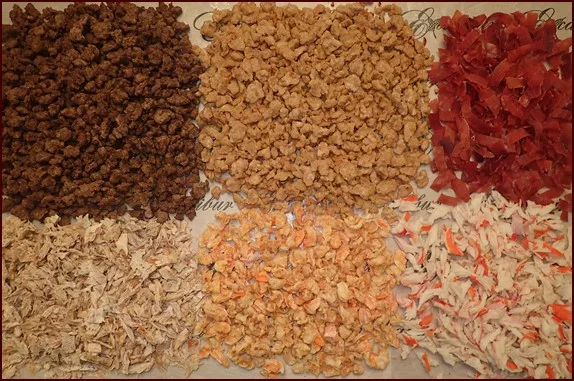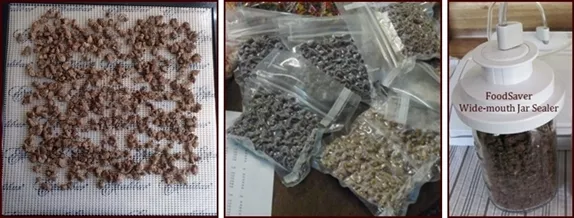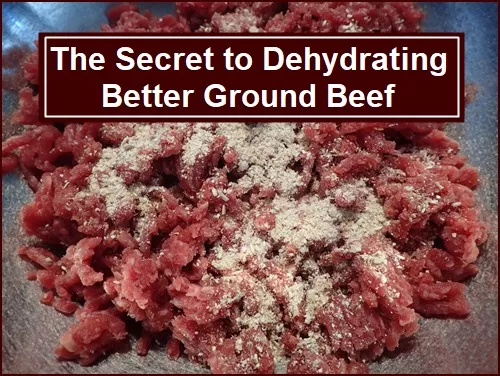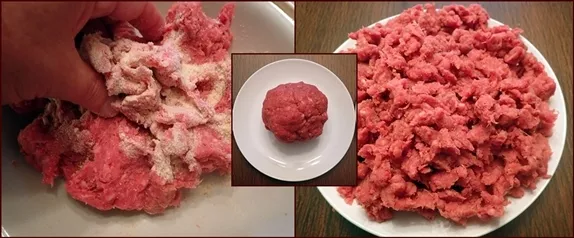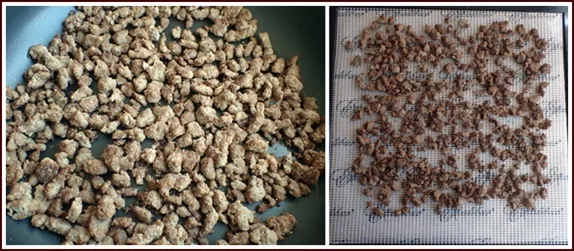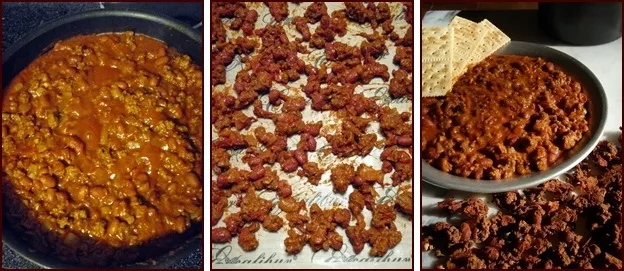Dehydrating Meat
FROM https://www.backpackingchef.com/dehydrating-meat.html#dehydratinggroundbeef
There are a few tricks when dehydrating meat for backpacking meals that greatly improve its tenderness when you rehydrate it on the trail.
Dehydrating Meat Topics:
How to Dehydrate:
I continue in the next two sections with:
Before we get into how to dehydrate meat, let’s cover a question I often receive about dehydrating meat...
How Long will Dried Meat Keep?
Freezing dried meat will preserve it for several years.
Vacuum sealing the dried meat prior to freezing prevents freezer burn and freezing stops the clock for all biological processes.
For use and storage less than a year, freezing is not required, but is still beneficial before you assemble your meals – provided you take reasonable care in drying and packing it.
Dry only lean meats and blot off any oil during the drying process. It is the fat in meat that can turn rancid as it reacts over time with oxygen. Heat and light accelerate oxidation, so store in a cupboard away from heat.
As long as the meat you dry is low-fat, it will keep well in jars with oxygen absorbers or in jars that are vacuum sealed with the FoodSaver accessory. I have stored dehydrated meat for up to a year in jars. If you want to go longer than a year, or if you just want peace of mind, you can vacuum seal the dried meat in vacuum bags, and place the meat in the freezer. When taking dried food out of the freezer, allow the food to return to room temperature before opening the bag. Otherwise, condensation may form on the food.
See the section on vacuum sealing food for more information about best practices for storing dried meat.
Dehydrating Meat in a Food Dehydrator
Many food dehydrator user guides and books include recipes for dehydrating raw meat, such as beef jerky, by placing the meat directly into the dehydrator without precooking it.
This is not safe.
Even if the temperature setting of your food dehydrator goes up to 165°F (74°C), the temperature of the meat inside the dehydrator may not reach that temperature, due to evaporative cooling. Pathogens, such as Salmonella and E. coli, may survive the drying process.
The U.S. Department of Agriculture Food Safety & Inspection Service recommends cooking beef to an internal temperature of 160°F (72°C) and poultry to 165°F (74°C), before drying it in a home food dehydrator.
See USDA Article: Jerky and Food Safety.
All Backpacking Chef instructions and recipes specify precooking meat before drying it.
Dehydrating Ground Beef
Breadcrumbs
Backpackers often call dehydrated ground beef “gravel” because it doesn’t rehydrate well. Solve this problem by adding breadcrumbs to the meat before cooking it. Breadcrumbs allow more liquid to penetrate the dried meat when you rehydrate it, so it turns out tender every time.
Make breadcrumbs by dehydrating bread slices for two to three hours and then grinding the dried bread in a food processor.
Gluten-Free Alternatives:
If you are sensitve to gluten in breadcrumbs, you can substitute ground oats or millet to prep the ground beef. Learn how in this Trail Bytes article.
Or you can use ground chickpeas as shown on the Dehydrating Chickpeas page.
Use only lean or extra lean ground beef with fat content in the 7% to 10% range. Grass fed beef is usually in the 7% to 10% range.
Ground beef with 15% fat content is often labeled as Ground Round. Ground beef labeled as Chuck or Hamburger will have higher fat content.
Some of the fat in the ground beef gets removed when you cook it. Some fat beads up on the surface of the meat while drying. Blot off the fat from the meat with paper towels after cooking it, and a couple of times while it dries. Starting with low fat meat and blotting off what you can during cooking and drying will minimize any risk of the meat spoiling after it is dried.
For each pound of beef, sprinkle ½-cup of finely ground breadcrumbs over the meat, or substitute ½-cup ground oats or ground dehydrated chickpeas.
Work the breadcrumbs into the raw meat with your fingers.
After working the breadcrumbs into the ground beef, form the meat into a ball and set aside for a few minutes.
Break the meat into small pieces and cook in a frying pan over medium high heat until lightly browned and fully cooked, stirring continuously. Remove from heat and squeeze between paper towels to remove moisture.
Spread small pieces of ground beef on nonstick dehydrator trays or silicone mesh sheets.
Dehydrate ground beef at 145°F (63°C) for approximately six hours. Ground beef will be hard when dry.
Once or twice during the drying process, move the meat around and squeeze with a paper towel to remove oil. Wipe any oil off the non-stick sheets. Break any pieces of meat that are drying slower than the rest in half.
Dehydrating meat separately allows me to include it in a wide variety of recipes which combine it with different starches (potatoes, rice and pasta) and vegetables.
You’ll find the complete collection of recipes which include dehydrated meat in my book, Recipes for Adventure.
You can also dehydrate meat in a complete meal like chili:
And Explore these recipes shared by Backpacking Chef Readers:
